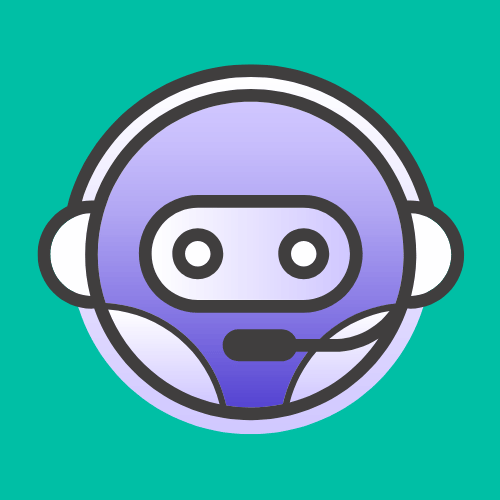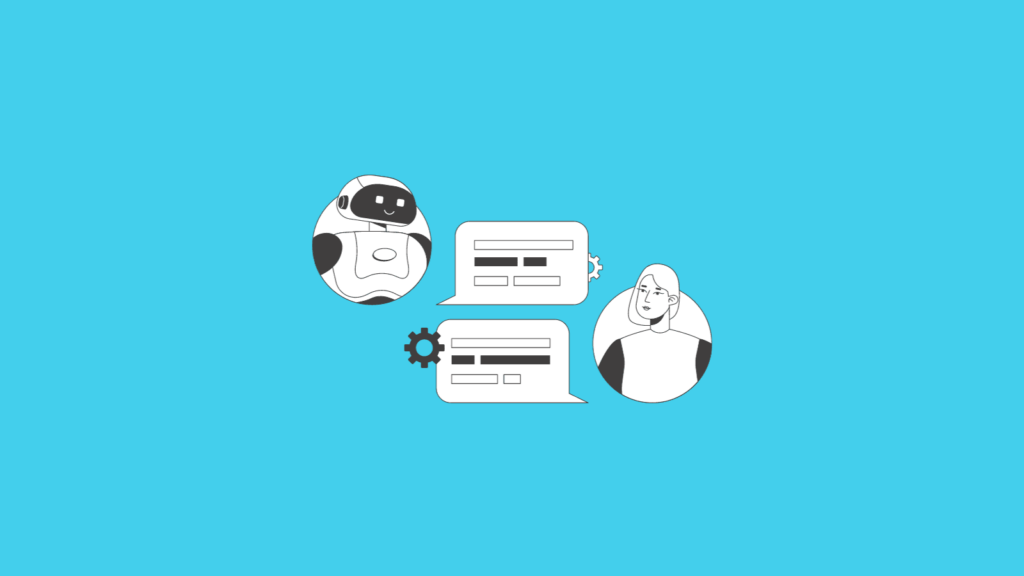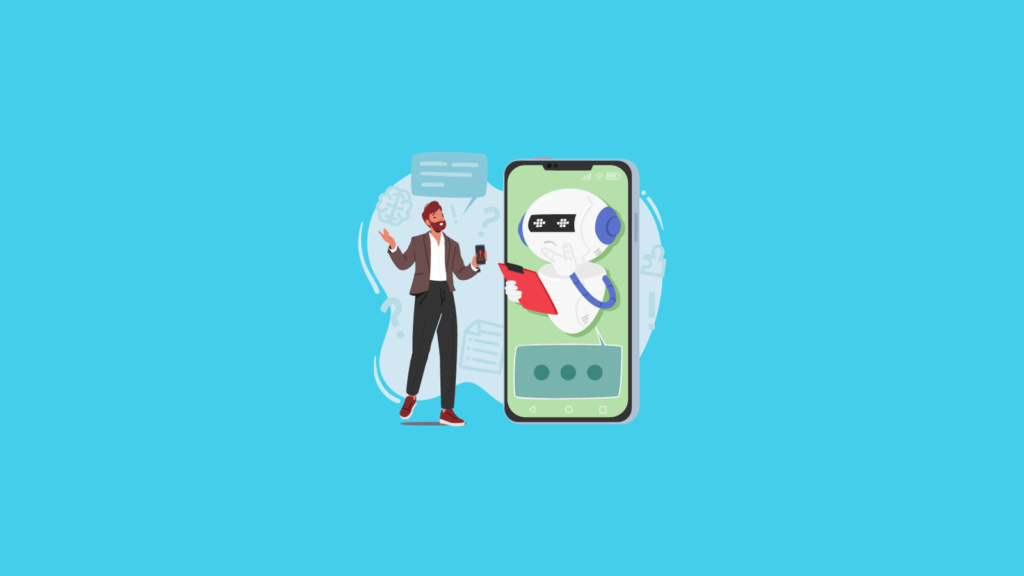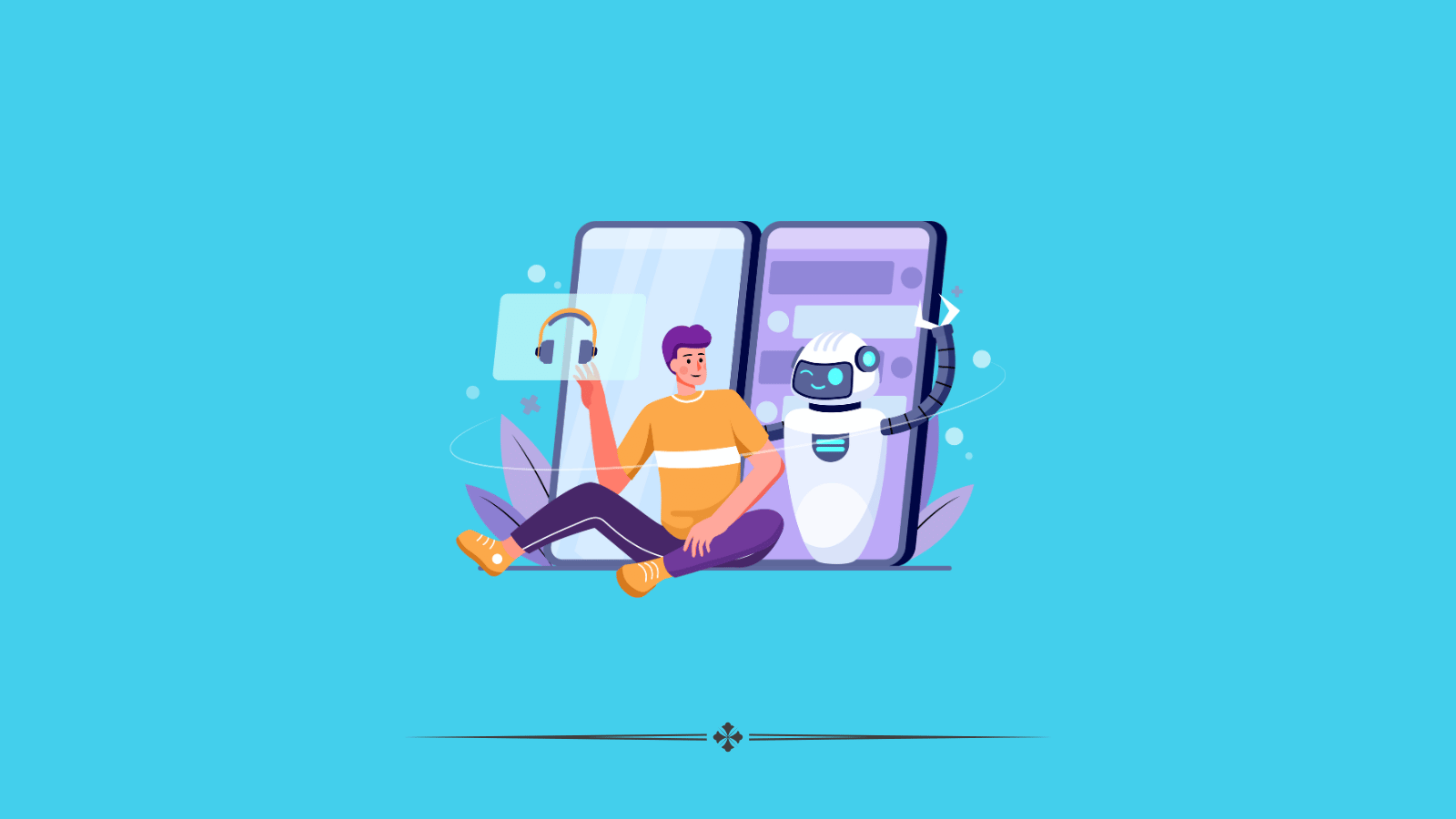5 Best AI-Powered Chatbots for Customer Support System of Your Business

Any business must focus on the quality of customer service. It’s no secret that satisfying existing customers’ needs brings companies much more value than constantly searching for new customers.
Rapid technology growth leads to new digital solutions and programs that improve customer interaction, optimize business processes, increase operational efficiency, and ensure decent results.
The most sensational and popular tools are AI chatbots and IVR technology. They are becoming increasingly in demand, and customer service with their help becomes easy and efficient.
AI-powered chatbots respond to customer requests promptly, analyze the received data, automate tasks, and help support specialists perform their duties effectively, provided that the company selects and integrates a suitable chatbot for customer support into its business processes.
In this article, we will discuss the following:
Free AI Marketing Masterclass
Let’s start with a Free AI Marketing Masterclass. If you want to really become more successful with AI Marketing, you need to integrate AI into your Marketing mix. Check out how AI can help you tell better stories in the free masterclass. Enjoy!
- Gratis masterclass AI-marketing
- Chatbots voor klantenservice: concept en werkingsprincipes
- Voordelen van chatbots in de klantenservice
- Het concept van conversationele AI IVR
- Conversationele IVR-voordelen
- Beste klantenservice-chatbots
- AI-chatbots voor klantenservice en ervaring
- Hoe u AI-chatbots voor klantenservice kunt implementeren
In addition to these questions, we will explore the five most popular chatbots for customer support.
Chatbots for Customer Service: Concept and Working Principles

Chatbots are innovative IT solutions designed to automate user interactions via text or voice messages.
AI-based chatbots do not require the intervention of company employees. They can respond to customers and clarify all the necessary information independently. Their work is based on several important algorithms, thanks to which bots can understand and process language and learn. Machine learning algorithms allow AI to learn on its own. There is no need to constantly enter new phrases, expressions, and their interpretations into the database.
The AI processes and generates speech using the NLP algorithm, which stands for Natural Language Processing. It allows a chatbot to distinguish when a person is asking something and when they are calling for action or making an assertion. Also, NLP for chatbots can highlight the main entities present in the user’s speech.
A chatbot with AI compares favorably to its less advanced counterparts in that it has a wider set of functions, and no programmers or linguists are required to run and configure it. Moreover, you can participate in its training and maintain full control over the system if necessary.
Benefits of Chatbots in Customer Service

Chatbots are an incredibly powerful and in-demand tool crucial to developing and enhancing customer service. Every year, more and more companies use them to create personalized user experiences and provide automated customer service.
- Fortune Business Insights states that the global chatbot market was valued at $396.2 million in 2019. Projections indicate that by 2027, this figure will increase to $1,953.3 million.
Companies using chatbots for customer service can gain an edge and leverage the numerous advantages they offer. The most significant ones are:
Providing 24/7 Support
When support is available 24/7, customers don’t have to wait until the start of the business day to get a response to their query; the chatbot automatically responds at any moment. In the event of a serious issue that requires staff intervention, the AI lets you know when you can reach a specialist.
Simplified Order Placement
AI-powered chatbots can take orders directly within the chat or guide the customer to the order placement page to complete the purchase process. This significantly reduces the time and effort a potential customer needs to make to place an order. As a result, they enjoy an enhanced user experience, leading to increased loyalty and the likelihood of repeat purchases.
Reduced Waiting Time
There’s no denying that waiting for an operator’s response results in customer frustration. Savvy consumers no longer have the time or patience to hang around for the sake of getting unsatisfactory feedback. They need to resolve their issues quickly, and an AI chatbot has the capacity to deal with all things customer service. They can respond instantly to any inquiry, from answering simple and frequent questions to transferring the conversation to a specialist when necessary.
Multilingual Support
AI chatbots are available in many languages. This is another crucial advantage for customers. No matter what language your customer speaks, they will get expert assistance. You can program the bots for any number of languages the provider offers.
Personalized Approach
As an advanced tool, AI chatbots can enhance the user experience by tailoring personalized greetings and helping brands build lasting customer relationships. On top of that, AI chatbots can recommend products or services to consumers, answer their questions, and offer instructions based on their goals while also guiding them through the sales funnel.
Naturally, building chatbots powered by AI offers many advantages and yet requires careful planning, a good understanding of user needs, and quality development. That’s the only way to develop a scalable bot framework and ensure it yields the desired results.
The Concept of Conversational AI IVR

Interactive Voice Response (IVR) is another innovative solution for enhancing customer service. The system routes incoming calls to various departments and operators using pre-recorded voice messages.
Conversational IVR operates on a simple principle. Pre-recorded voice messages and automated standard responses (business hours, service prices, etc.) are set up for different menu options. For responses where the text is unknown in advance (e.g., an account balance announcement), the text is composed of individual words and phrases or synthesized into speech.
The system configures the algorithm to launch menu options, connect databases, retrieve information, transfer calls to specific operators, and more. Callers dial a number linked to conversational IVR software, listen to voice prompts, and press the desired keypad button. A tone signal travels to the system, interpreting it to determine the button pressed. Following the algorithm, it triggers sub-menu voice prompts, reads information, transfers the call to an operator, and so on.
A significant aspect of IVR menus is their ability to organize an electronic queue from incoming calls directed to the same department. Callers receive a message indicating that all employees are busy, providing an estimated wait time, and when an operator becomes available, the system forwards the caller in order.
Conversational IVR Benefits

IVR technology, much like chatbots, offers numerous advantages for quality customer service.
- Time-saving for staff: Agents or sales reps don’t need to repeatedly ascertain the reasons behind the calls, determine which department to route the incoming call to, and manually connect callers to the right departments or specialists. IVR provides automatic routing, and if all employees are currently occupied, there’s no need to ask the client to call back — the system places the call in a queue.
- Convenience for customers: It’s no secret that service quality and speed increase with IVR implementation. Callers don’t have to wait long for a response; the auto-attendant immediately transfers them to a competent specialist.
- Reduced conversion losses: This advantage stems from the previous point. It’s easy to understand that many potential buyers may turn to competitors offering better service if they don’t receive a satisfactory solution to their problem. A well-organized voice menu helps retain customers and efficiently generates leads by providing quality service.
- Continuous service provision: Unlike live operators, a voice menu operates around the clock, without breaks or weekends. IVR comes to the rescue if a customer needs an answer during non-business hours, provided the problem doesn’t require specialist intervention. Round-the-clock information support contributes to increased loyalty.
- Reduction in phone service errors: Even experienced call center employees sometimes make mistakes, especially when dealing with a high volume of calls. They might connect callers to the wrong specialist, provide incorrect information, or inaccurately record outcomes. Automation through IVR eliminates the human factor and enhances data accuracy.
Best Customer Service Chatbots
The widespread use of customer service chatbots spans across various industries, making them versatile and adaptable to different business needs. We’ve curated a short list of popular chatbot examples that can fit into your conversational strategy.
| Chatbot | Advantages | Integration | Features |
| Salesforce Einstein |
|
With CRM and Salesforce products |
|
| HubSpot WordPress chatbot |
|
With CRM systems and WordPress websites |
|
| JustCall SMS Bot |
|
With SMS platforms and messengers |
|
| Zendesk Answer Bot |
|
With various messengers and support systems |
|
| Ultimate |
|
With CRM and ERP systems |
|
So, what does it take to choose a suitable chatbot for customer support? First of all, it takes time. But that’s the only investment you’ll have to make to find the one that meets your business needs.
AI Chatbots for Customer Service and Experience
Building AI-powered chatbots can be a daunting task for the majority of small businesses. But when it comes to medium-sized companies and enterprises, investing in tech advancements and machine learning for chatbot deployment makes a lot of sense. That’s where lesser-known platforms like SendPulse step in. Small businesses and mid-sized businesses can use their chatbot builder to create GPT-powered chatbots for a preferred channel, be it Facebook, Instagram, or WhatsApp.
The future of AI chatbots in business is promising. With advancements in machine learning and natural language processing, brands can now have more control over their interactions. As the architecture of AI chatbots and conversational IVR software continues to develop, interactive AI will become the norm in customer service for all industries.
How to Start Implementing AI Chatbots for Customer Service

Customer expectations are higher than ever. People want instant answers, personalized assistance, and 24/7 availability. For businesses, meeting these demands can be challenging, especially with limited resources. This is where AI-powered chatbots come into play, offering a scalable, efficient way to handle customer inquiries, streamline service, and improve satisfaction. But how do you go about implementing an AI chatbot for customer service? Here’s a step-by-step guide to help you get started.
Step 1: Define Your Goals and Objectives
Before diving into chatbot implementation, it’s essential to have a clear vision of what you want the chatbot to accomplish. Are you aiming to reduce response times, manage common inquiries, or provide after-hours support? Understanding your primary goals will guide you in choosing the right chatbot capabilities and metrics to measure success. For example, if your goal is to improve response times for basic FAQs, a simple rule-based chatbot might be enough. However, if you want the bot to handle complex queries or learn over time, you’ll need a more advanced AI-powered solution.
Step 2: Choose the Right Type of Chatbot
Not all chatbots are created equal. Broadly, there are two main types of customer service chatbots: rule-based bots and AI-powered bots.
- Rule-Based Chatbots: These bots operate on a fixed set of rules and keywords. They’re effective for straightforward tasks, like answering FAQs or guiding users through simple processes. However, they lack the ability to understand complex language or learn from interactions.
- AI-Powered Chatbots: These bots use machine learning and natural language processing (NLP) to interpret user intent, even when queries aren’t straightforward. They’re ideal for more dynamic customer service needs, as they can handle varied inquiries, learn from each interaction, and improve over time.
For businesses aiming for high-quality customer service, AI-powered chatbots are often the preferred choice. These bots can scale easily, handle diverse queries, and provide a more conversational experience that customers appreciate.
Step 3: Select a Chatbot Platform
There are various platforms available for building and deploying AI chatbots, each with its own strengths and features. When selecting a platform, consider factors like ease of integration, customization options, and scalability. Popular options include:
- Dialogflow by Google: Known for its NLP capabilities and integration with Google services.
- Microsoft Bot Framework: Offers robust customization and integration with Microsoft products.
- IBM Watson Assistant: Known for strong AI capabilities and enterprise-level security.
- Zendesk and Intercom: Great options if you’re already using these platforms for customer support.
Choose a platform that aligns with your business’s technical setup and customer service needs. Many platforms offer no-code or low-code options, making it easy to get started without requiring extensive programming knowledge.
Step 4: Design the Chatbot Conversation Flow
A successful chatbot is one that feels intuitive and human-like in its responses. Start by mapping out the typical customer journeys and queries your bot will handle. Identify common questions, pain points, and decision paths. For example, if you run an e-commerce store, your chatbot might need to handle inquiries about product availability, order status, return policies, and shipping details.
Create conversation flows that guide customers naturally through their queries, providing them with useful information at every step. Include fallback options if the bot cannot understand a query, offering customers the option to escalate to a human representative when needed. This approach ensures the chatbot remains helpful without frustrating users with incorrect or irrelevant responses.
Step 5: Train Your Chatbot Using Real Data
To make an AI chatbot effective, it needs to be trained on real customer interactions. Begin by feeding the chatbot with a diverse dataset of queries, responses, and keywords relevant to your business. Many platforms allow you to upload previous customer service transcripts or FAQ content to provide a foundation for your bot’s responses.
Additionally, set up NLP training so the bot can recognize different ways of phrasing similar questions. For instance, questions about order status can vary widely, from “Where’s my package?” to “When will my order arrive?” A well-trained bot will recognize these as the same query type and respond accurately. Training should be an ongoing process, as regular updates improve the chatbot’s accuracy and ability to understand new queries.
Step 6: Test the Chatbot in a Controlled Environment
Before launching the chatbot to customers, conduct a pilot test in a controlled environment. Testing allows you to observe how the chatbot handles live queries, identify any gaps in the conversation flow, and make adjustments as needed. Engage both team members and a small group of customers to test various scenarios and gather feedback. Common things to check for include:
- Response accuracy and relevance
- Handling of complex or ambiguous queries
- Ability to provide clear, actionable responses
During this phase, tweak the bot’s responses, add new training data, and refine the conversation flow to ensure a smooth experience.
Step 7: Deploy and Monitor Performance
Once testing is complete and you’re satisfied with the chatbot’s performance, it’s time to deploy it to your website, app, or social media channels. But the work doesn’t stop at deployment. Continuous monitoring is key to maintaining an effective chatbot.
Track key performance metrics, such as customer satisfaction scores, response times, resolution rates, and escalation to human agents. This data will help you understand how well the chatbot is meeting customer needs and whether adjustments are needed. Most platforms provide analytics dashboards, enabling you to monitor the bot’s performance in real time and make data-driven improvements.
Step 8: Continuously Optimize and Update the Chatbot
AI chatbots are not “set-it-and-forget-it” solutions. As customer needs evolve, your chatbot should, too. Regularly review conversation logs to spot any recurring issues or new question types. Use this feedback to update the chatbot’s training, improve its understanding of nuanced questions, and add new features as your business grows.
For example, if you notice customers frequently asking about product comparisons or specific technical details, consider training the chatbot to provide more in-depth responses on these topics. This ongoing optimization ensures the chatbot remains a valuable tool for customers and evolves to meet changing demands.
Embracing AI Chatbots for Future-Ready Customer Service
Implementing an AI chatbot can transform customer service, offering fast, reliable support and freeing human agents to handle more complex cases. By following these steps, you can set up a chatbot that aligns with your customer service goals, providing a smoother, more efficient experience for your audience. Embrace the potential of AI, and you’ll be better prepared to meet the demands of modern customer service, delivering value and convenience in a way that keeps customers coming back.
FAQ
What are AI-powered chatbots for customer support?
AI-powered chatbots for customer support are virtual assistants integrated with artificial intelligence technology to automate interactions and provide instant responses to customer inquiries and issues.
How do AI-powered chatbots improve customer support?
AI-powered chatbots improve customer support by offering 24/7 availability, handling multiple queries simultaneously, providing consistent responses, and resolving common issues quickly, thus enhancing overall customer satisfaction.
What industries benefit from using AI-powered chatbots for customer support?
Industries such as e-commerce, banking, telecommunications, healthcare, and travel benefit from AI-powered chatbots for customer support by streamlining operations, reducing response times, and delivering personalized customer experiences at scale.
What features make AI-powered chatbots effective for customer support?
Effective AI-powered chatbots for customer support feature natural language processing (NLP) capabilities to understand and respond to human language, integration with CRM systems for personalized interactions, and escalation protocols for complex queries.
How can businesses integrate AI-powered chatbots into their customer support strategy?
Businesses can integrate AI-powered chatbots into their customer support strategy by identifying common customer queries, designing conversational flows, training chatbots with relevant data sets, and continuously optimizing based on user interactions and feedback.
What are the advantages of using AI-powered chatbots over traditional customer support methods?
AI-powered chatbots offer advantages such as cost savings on customer service operations, faster response times, scalability to handle high volumes of inquiries, and the ability to provide instant support across multiple channels including websites, mobile apps, and messaging platforms.
How can AI-powered chatbots personalize customer interactions in customer support?
AI-powered chatbots personalize customer interactions by analyzing customer data, preferences, and past interactions to tailor responses, recommend products or solutions, and provide proactive support based on individual needs and behaviors.
What security measures should businesses consider when using AI-powered chatbots for customer support?
Businesses using AI-powered chatbots for customer support should implement encryption protocols for data security, adhere to data privacy regulations like GDPR, conduct regular security audits, and ensure chatbots are trained to handle sensitive information securely.
What are the limitations of AI-powered chatbots in customer support?
Limitations of AI-powered chatbots in customer support include challenges with understanding complex queries, limitations in handling emotional or nuanced conversations, dependency on quality data for training, and the need for human intervention in certain situations.
How can AI-powered chatbots enhance customer experience in customer support?
AI-powered chatbots enhance customer experience by providing immediate responses to inquiries, reducing wait times, offering personalized recommendations, enabling self-service options, and improving overall satisfaction with efficient issue resolution.
What future trends do AI-powered chatbots represent in customer support?
Future trends in AI-powered chatbots for customer support include advancements in AI algorithms for more accurate natural language understanding, integration with voice assistants, enhanced emotional intelligence capabilities, and expansion into new industries and use cases.
How can businesses measure the ROI of implementing AI-powered chatbots in customer support?
Businesses can measure ROI by tracking metrics such as reduction in customer service costs, increase in customer satisfaction scores, decrease in average handling time per inquiry, and conversion rates from chatbot interactions to sales or resolutions.
What are the steps to deploying AI-powered chatbots effectively in customer support?
Steps to deploying AI-powered chatbots effectively include defining clear objectives, selecting the right chatbot platform or provider, designing intuitive user interfaces, training chatbots with relevant data sets, conducting pilot tests, and continuously monitoring and optimizing performance based on analytics.
Why are AI-powered chatbots becoming essential in modern customer support strategies?
AI-powered chatbots are essential in modern customer support strategies because they streamline operations, enhance efficiency, meet consumer expectations for instant service, and allow businesses to focus human resources on more complex tasks that require empathy and creativity.
How can AI-powered chatbots handle multilingual customer support?
AI-powered chatbots can handle multilingual customer support by integrating with language processing capabilities that enable them to understand and respond in different languages based on user preferences or detected language settings.
What are the challenges businesses face when implementing AI-powered chatbots for customer support?
Challenges include ensuring chatbots are properly trained to understand diverse customer queries, maintaining consistency in responses across different channels, managing integration with existing CRM systems, and overcoming initial user skepticism or resistance to automated interactions.
How can AI-powered chatbots assist in reducing customer service response times?
AI-powered chatbots assist in reducing response times by instantly addressing common queries, automating routine tasks like order tracking or account inquiries, and seamlessly escalating complex issues to human agents when necessary.
What role do AI-powered chatbots play in improving first-contact resolution rates in customer support?
AI-powered chatbots improve first-contact resolution rates by efficiently handling inquiries with accuracy, accessing customer data to provide relevant solutions, and ensuring issues are resolved promptly without the need for multiple interactions.
How can businesses ensure AI-powered chatbots maintain a conversational tone in customer interactions?
Businesses can ensure chatbots maintain a conversational tone by designing natural language processing models that mimic human conversation, incorporating empathy and personalized responses based on customer context and historical data.
What data privacy considerations should businesses address when using AI-powered chatbots?
Businesses should address data privacy considerations by implementing secure data storage and encryption protocols, obtaining customer consent for data usage, complying with privacy regulations (e.g., GDPR, CCPA), and transparently communicating how customer data is collected and used.
How do AI-powered chatbots contribute to customer loyalty and retention strategies?
AI-powered chatbots contribute to customer loyalty by delivering consistent service experiences, personalizing interactions based on customer preferences and history, and proactively engaging customers with relevant offers or support.
What are the customer feedback mechanisms for evaluating AI-powered chatbot performance?
Customer feedback mechanisms include soliciting feedback through surveys, monitoring chatbot interaction analytics (e.g., user satisfaction ratings, conversation completion rates), analyzing sentiment analysis of customer responses, and conducting usability testing.
How can AI-powered chatbots assist in upselling and cross-selling products or services?
AI-powered chatbots can assist in upselling and cross-selling by analyzing customer purchase history, recommending complementary products based on preferences or browsing behavior, and executing personalized marketing strategies during customer interactions.
What are the considerations for integrating AI-powered chatbots with existing customer support workflows?
Considerations include ensuring seamless integration with CRM systems and helpdesk platforms, providing training for customer support teams on chatbot capabilities and escalation procedures, and maintaining consistent branding and customer experience across all channels.
How can AI-powered chatbots handle complex customer inquiries that require human intervention?
AI-powered chatbots can handle complex inquiries by identifying when human intervention is necessary, seamlessly transferring the conversation to a live agent, providing context and relevant information gathered during the interaction to streamline the resolution process.
What impact do AI-powered chatbots have on reducing customer service costs for businesses?
AI-powered chatbots reduce customer service costs by automating routine tasks, minimizing the need for human intervention in basic inquiries, optimizing agent efficiency, and enabling businesses to scale customer support operations without proportional increases in staffing.
How can AI-powered chatbots contribute to brand differentiation and competitive advantage?
AI-powered chatbots contribute to brand differentiation by offering superior customer service experiences, demonstrating technological innovation and responsiveness, and positioning businesses as leaders in leveraging AI for customer engagement and satisfaction.
What training and maintenance strategies are essential for optimizing AI-powered chatbot performance over time?
Training and maintenance strategies include continuous updates to chatbot algorithms based on user feedback and data analysis, periodic retraining with new datasets to improve accuracy and relevance, and monitoring performance metrics to identify areas for improvement.
How can businesses mitigate the risk of chatbot failures or errors in customer interactions?
Businesses can mitigate the risk of chatbot failures by implementing fail-safe mechanisms for error detection and correction, providing clear options for users to escalate to human agents, conducting regular performance audits, and maintaining transparency about chatbot capabilities and limitations.
Create more and better content
Check out the following resources and Grow!